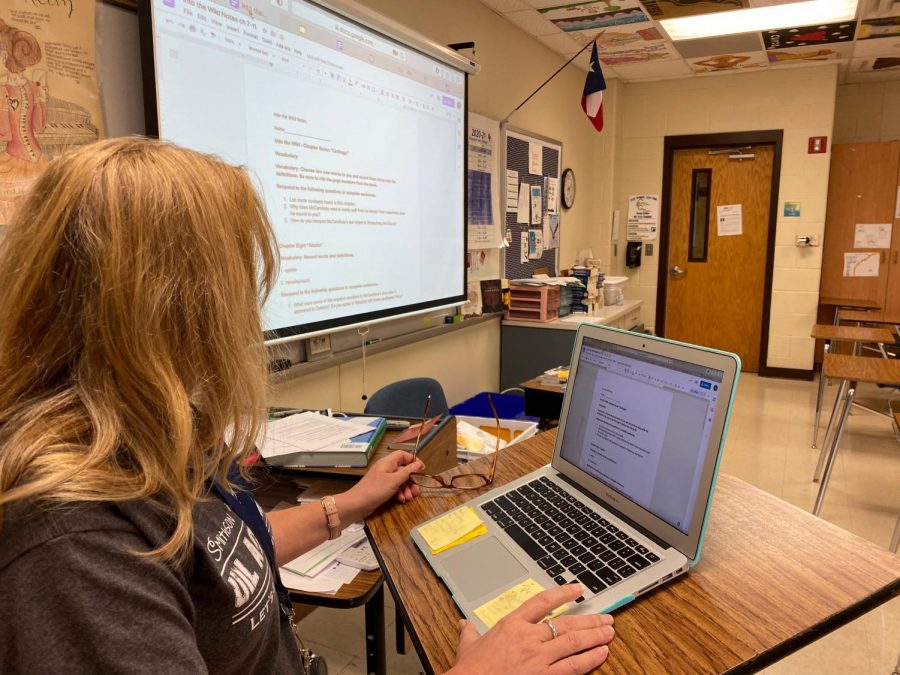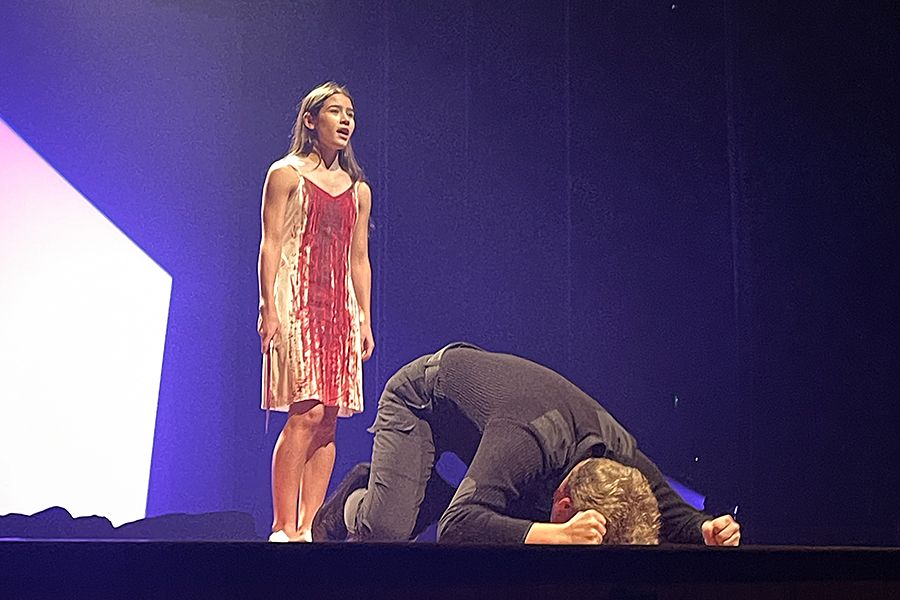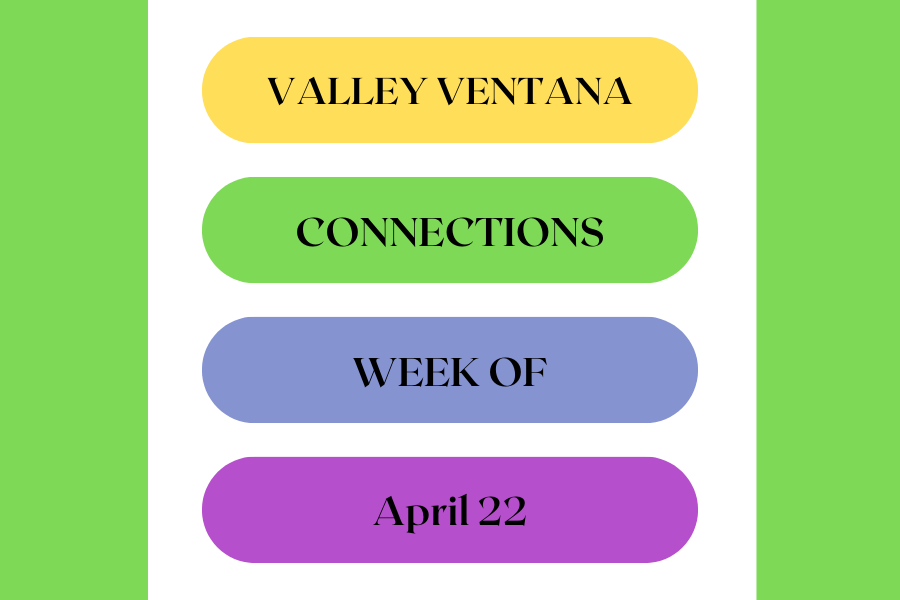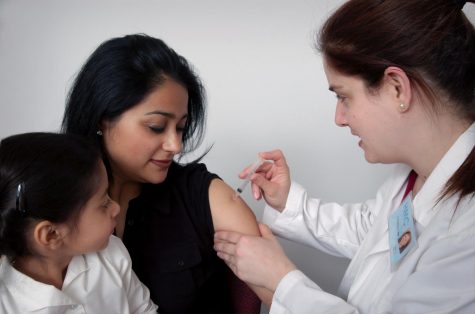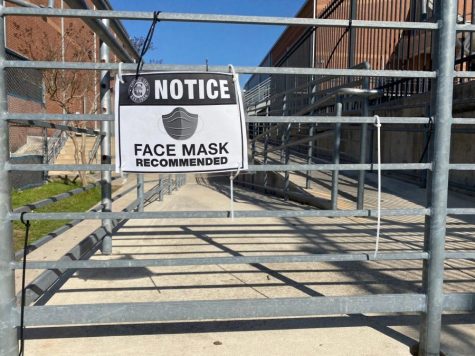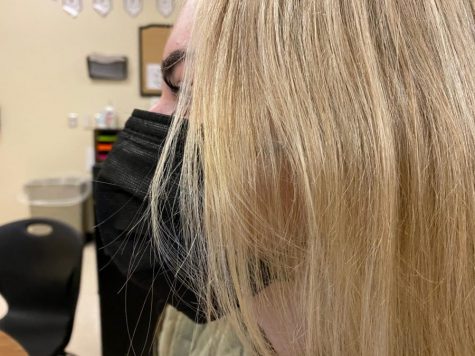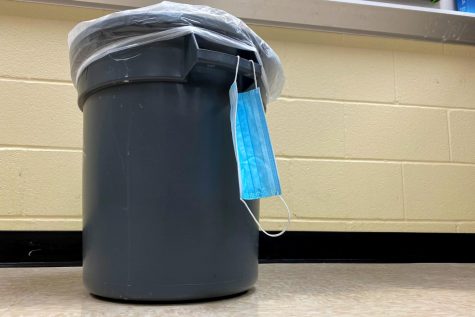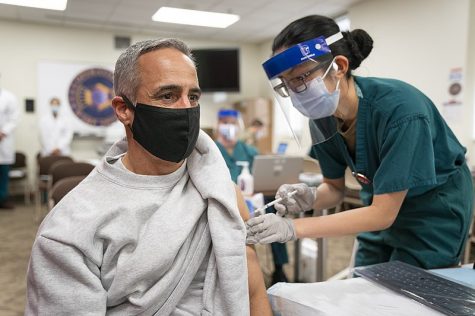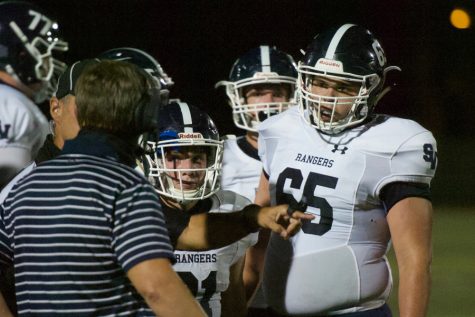Remote learning paused for 2021-22
Superintendent announces changes to instruction options
AP English III teacher Verna Mann presents the class assignment via projector for face-to-face students and shares her laptop screen on Google Meets for remote students.
April 16, 2021
After a year of hybrid learning because of the pandemic, superintendent Andrew Kim announced Thursday Comal ISD will not offer remote learning in the 2021-22 school year.
However, the district plans a new initiative for remote learning in the 2022-23 school year, he wrote in an email to parents.
“During this next year, I will be working with my team on how we can offer a pure(ly) remote learning opportunity starting in 2022-23 that is staffed with teachers who are dedicated 100 percent to remote instruction,” Kim said. “In the meantime, we will suspend remote learning for the 2021-22 school year.”
Currently, the district uses hybrid instruction, in which teachers cater lessons to online and face-to-face students in the same class period.
“Remote learning has allowed students to participate in class when they are sick or doing a college visit, or to access recorded lessons on Google Classroom after hours,” Kim said. “However, while some students have seen success learning from home, for many it has been a struggle.
“We have also asked our teachers to instruct both on-campus and remote students simultaneously. While they have done a tremendous job, the combo-class model is simply not sustainable for the long term.”
While the district considers some form of remote instruction, not all students agree.
“I don’t think we should have remote so that it is easier for students and teachers and makes it more fair academics wise,” junior Jordan Streitz said. “Or, it should be only for certain people who qualify for it.”
With uncertainty concerning the COVID-19 pandemic, other students find this decision premature.
“I think it’s unsafe to take that option away from people who are immunocompromised,” junior Elle Suermann said.
The increasing availability of the COVID-19 vaccine to teens leads to optimism for 2021-22. In Texas, persons 16 and older qualify for the vaccine, with Pfizer catering to ages 16 and older and the Johnson & Johnson and Moderna vaccines verified for persons 18 and older. In the meantime, Pfizer conducts efficacy tests for ages 12-16.
“Certainly we will continue to monitor the pandemic and be prepared to pivot should the situation necessitate a change,” Kim said. “For now though, our focus will be on preparing to once again have on-campus learning for all students as we have traditionally done.”

